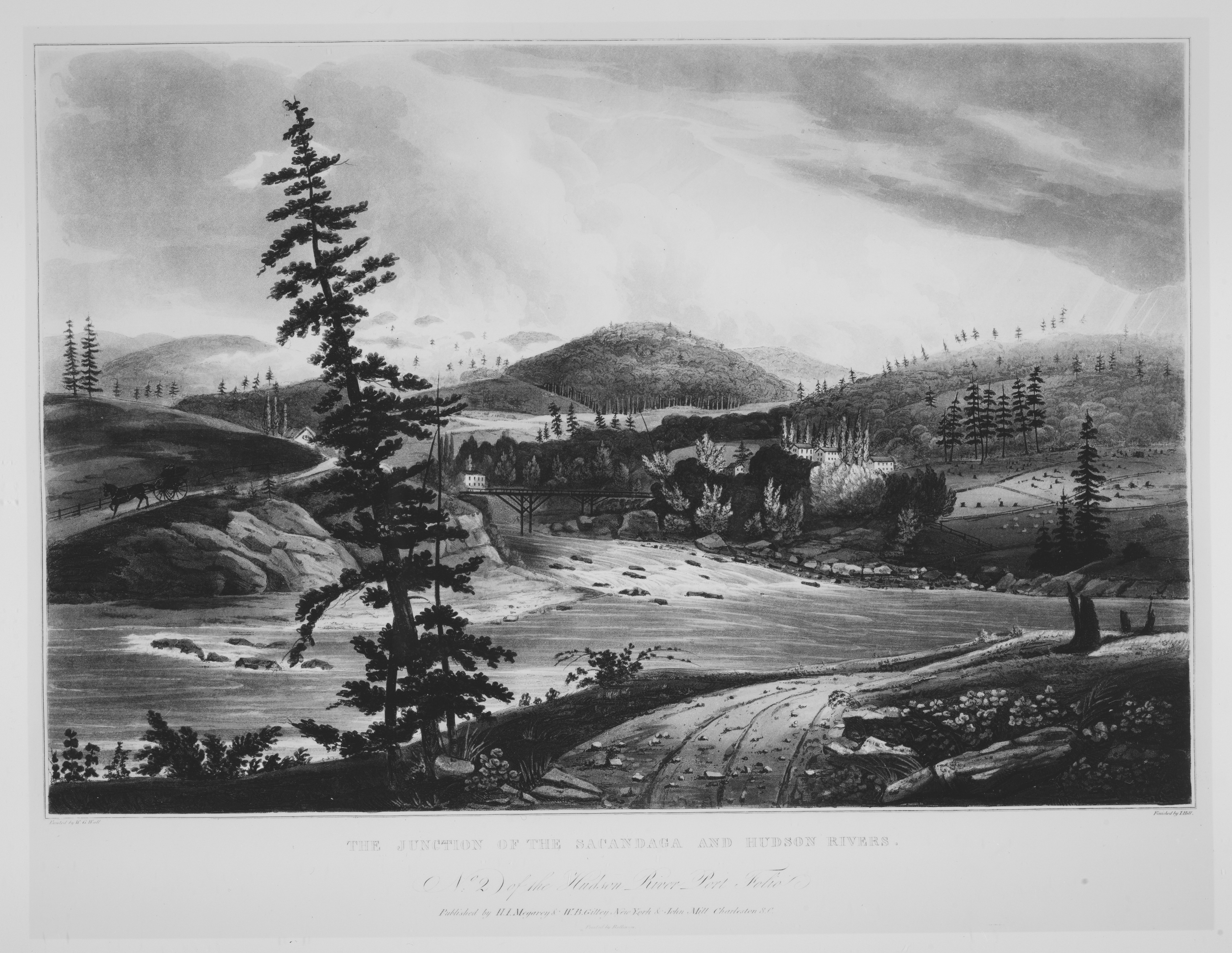Junction of the Sacandaga and Hudson Rivers (No. 2 of The Hudson River Portfolio)
Not on view
The confluence of the Sacandaga and Hudson occurs just below the rapids represented in plate 1 of the Hudson River Portfolio (54.90.1274(1)). John Agg's related text tells us, "the shores in this place, are broken and precipitous; and the natural course of the current is impeded and distracted by the large fragments of stone...the character of the scenery is a wild, ferocious, and solitary sublimity. " Both image and description come from a monument of American printmaking produced through the collaboration of artists, a writer, and publishers. In the summer of 1820, the Irish-born William Guy Wall toured and sketched along the Hudson, then painted a series of large watercolors. Prints of equal scale were proposed—to be issued to subscribers in sets of four—and John Rubens Smith hired to work the plates. Almost immediately, Smith was replaced by the skilled London-trained aquatint engraver John Hill, who finished the first four plates, and produced sixteen more by 1825. Over the next decade, the popularity of the Portfolio stimulated new appreciation for American landscape, and prepared the way for the Hudson River School.
Due to rights restrictions, this image cannot be enlarged, viewed at full screen, or downloaded.
This artwork is meant to be viewed from right to left. Scroll left to view more.




